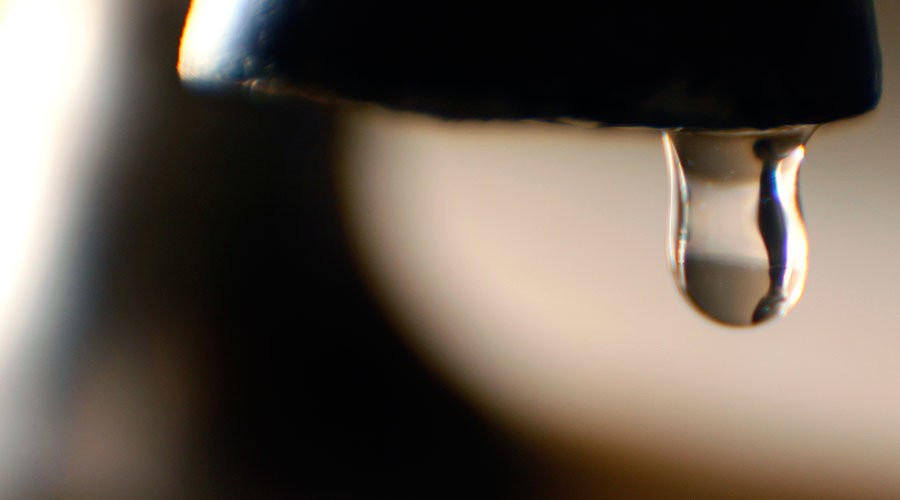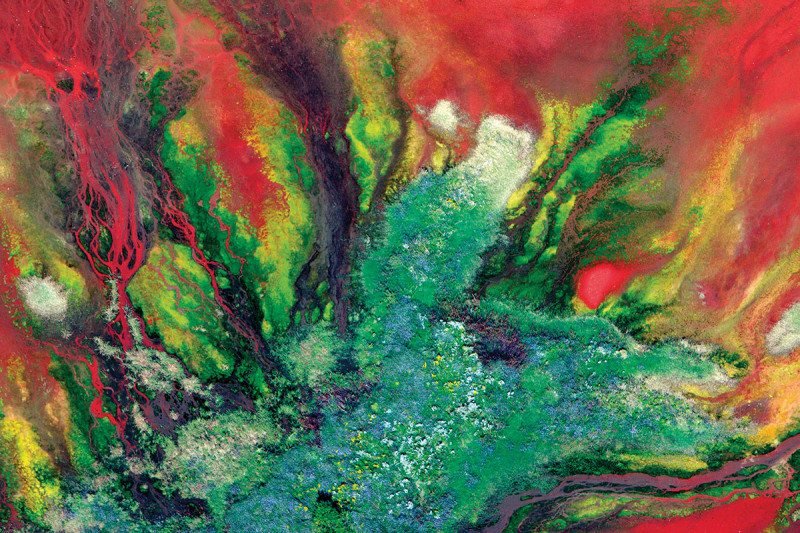The Mississippi River was named the second-most polluted waterway in the U.S. in 2012,1 but it still maintained swatches that were considered to be relatively pristine, particularly in the Upper Mississippi in Minnesota.
Now that, too, is being threatened by changes in the landscape, namely increasing industrial agriculture that is depleting groundwater for irrigation while flooding the area with chemicals.
Forests Rapidly Replaced With Corn, Soy and Potato Fields
Since 2011, about 400 square miles of forest, marshes and grasslands in the Upper Mississippi watershed have been lost. The once-rich natural ecosystems were cleared out to make way for agriculture and urban development.
This is the second fastest rate of land conversion in the U.S., according to a national study reported by a Star Tribune special report.2 Forests and marshes help to keep water supplies naturally cleansed and refreshed — the opposite of what occurs when industrial agriculture moves in. The Star Tribune continued:3
"That breathtaking transformation [of natural land being converted to industry] is now endangering the cleanest stretch of America's greatest river with farm chemicals, depleted groundwater and urban runoff.Among the environmental assaults already being seen include increased nitrate contamination in drinking water, which is the result of fertilizer pollution. Park Rapids, Minnesota, spent $3 million to dig deeper wells due to nitrate contamination.
At this rate, conservationists warn, the Upper Mississippi — a recreational jewel and the source of drinking water for millions of Minnesotans — could become just another polluted river."
It's estimated that 10 percent of private drinking wells may have nitrate levels that pose dangers to pregnant women and infants.4
There's also been widespread damage to water quality, including a rise in algae-promoting phosphorus, sediment turning once clear water cloudy and bacteria. Since these contaminants are emerging in the headwaters of the Mississippi, it inevitably flows downstream, furthering the environmental destruction.
Potato Growers Stressing Out Aquifers for Irrigation
Demand for irrigation near the Upper Mississippi has increased to the point that aquifers and rivers that feed the Mississippi are becoming rapidly depleted.
R.D. Offutt, the largest potato grower in the U.S., applied for 54 irrigation permits in Minnesota in 2014 — each would allow the company to pump up to 1 million gallons of water a year from the Pineland Sands Aquifer near Park Rapids, Minnesota, according to the Star Tribune. They continued:5
"Offutt's plan represented just the latest in a burst of demand for agricultural irrigation in an area known for sandy soils that can become perfect for growing corn, soybeans and potatoes — given sufficient water.
Irrigation has increased by an average of 77 million gallons per year since 1988, or 85 percent, according to the Minnesota Department of Natural Resources (DNR)."Another 10,000 acres above the vulnerable aquifer have already been slated to be deforested for farming and another 20,000 acres may soon follow, according to the DNR. Further polluting the Mississippi poses significant risk not only in Minnesota but also downstream.
At least 15 million Americans depend on the river for water, as do 40 percent of migrating waterfowl in the U.S. and 25 percent North American fish species.6 It can be difficult to stop the destructive changes, since much of the vulnerable land is privately owned.
However, state agencies and conservationists, aware of the perilous state of the river and its tributaries, have purchased thousands of acres of land, or placed it under permanent easement, to help protect and preserve the environment.
Still, many areas remain at risk, not only in Minnesota but in the lower Mississippi river as well. In a rainbow-colored photograph taken by photographer J. Henry Fair, there's striking evidence of so-called "red mud" in an area south of Baton Rouge, Louisiana.7
This toxic sludge is an aluminum-processing waste product — the same substance that led to four deaths and created a state of emergency in Hungary when a broken reservoir containing the red mud flooded hundreds of houses.8
Iowa Report Highlights Health Effects of Nitrates in Drinking Water
Iowa has long faced problems with elevated levels of nitrates in drinking water and has been identified as a top contributor to pollution (nitrates and phosphorus) causing the dead zone in the Gulf of Mexico.
Now a new report released by the Iowa Environmental Council (IEC) has attempted to summarize the related health risks of nitrates in drinking water.9
Researchers reviewed over 100 studies on the health effects of nitrates in drinking water, and found multiple studies linked them to birth defects, bladder cancer and thyroid cancer.
While many of the health problems were found with nitrate levels higher than the drinking water standard of 10 mg/L, some studies suggested nitrate levels lower than the drinking water standard may still pose health risks. About 15 percent of private wells in Iowa may have nitrate levels that exceed federal standards.10
Water quality, or lack thereof, received renewed attention in Iowa recently after the water utility in Des Moines, Iowa sued three counties, alleging they polluted the river with nitrates from agricultural runoff. The water utility has already spent $1.5 million to remove nitrates from drinking water.
If the lawsuit succeeds, the agriculture industry will have to make changes to limit runoff.11 The U.S. Department of Agriculture (USDA) estimates that removing nitrate from U.S. drinking water costs nearly $5 billion a year,12which the industrial agriculture industry has been largely shielded from.
Sinkhole at Florida Fertilizer Plant May Lead to Contaminated Drinking Water
A large sinkhole has emerged under a gypsum stack at a Mosaic Co. fertilizer plant in Mulberry, Florida. Gypsum stacks are made out of phosphogypsum, a radioactive byproduct of the fertilizer industry (it's created when the companies use sulfuric acid to break down phosphate rock).
There are at least 70 gypsum stacks in the U.S., including about 20 in regions of west-central Florida, which are prone to sinkholes that allow the waste to seep into groundwater. ABC News reported:13
"The waste pile in Central Florida contains radioactive radium and uranium, radon gas, sulfates and other contaminants, according to the [U.S.] EPA [Environmental Protection Agency].
So far more than 200 million gallons of wastewater have been dumped into the Floridan Aquifer, a key drinking-water source for millions of people.
The company has found contaminants in a well being used to recover polluted water that is within a quarter mile from the hole, which means the contaminated water has reached the aquifer."In 2015, Mosaic settled a nearly $2 billion lawsuit with the EPA due to the company's management of pollution. "In the settlement, EPA cited a need for the company to prevent the release of hazardous, highly corrosive wastewater, and to improve its detection of potential leaks and spills," ABC News continued.14
Chemical Fertilizer Use May Get Worse Before It Gets Better
Synthetic fertilizers destroy natural nitrogen found in the soil, which means farmers must use increasing amounts of the fertilizers each year just to sustain their yields.
It's estimated that in the last four decades, nitrogen fertilizer efficiency has decreased by two-thirds while their use per hectare (2.47 acres) of land has increased by seven times.15 Excess nitrogen in the soil gets mineralized into nitrate, which can then leach into water where it causes serious damage.
While fertilizer companies claim their products are necessary to feed the world, research suggests working with nature instead of against it via agroecology or "ecological farming" can produce just as much food without the need for chemical fertilizers.16 On an individual level you can help by buying food from farmers who are using natural methods and soil-regenerative techniques, such as no-till, cover crops, composting and livestock integration, instead of chemical fertilizers.
Your Water Is Probably Toxic
It's going to take change on a global scale — to industry, agriculture and public policy — to stop the water pollution that's already taking a health and environmental toll, but you can also act on an individual level to help the problem and protect yourself.
Considering the widespread contamination found in water around the globe, it's best to assume yours is less than pure and take steps to remedy it, such as using a high-quality water filtration system (unless you can verify the purity of your water). If you have well water, it would be prudent to have your water tested for nitrates and other contaminants. If you have public water, you can get local drinking water quality reports from the EPA.
To be certain you're getting the purest water you can, filter the water both at the point of entry and at the point of use. This means filtering all the water that comes into the house, and then filtering again at the kitchen sink and shower.
Unfiltered water can also expose you to dangerous chlorine vapors and chloroform gas. The U.S. Food and Drug Administration (FDA) and other U.S. government agencies report that most homes in the U.S. have measurable levels of chloroform gas, courtesy of chlorinated tap water.
Unless you have a whole house water filter, chlorine will vaporize from every toilet bowl in your home and every time you wash your clothes or dishes, or take a shower or bath. Chloroform gas, chlorine vapors and the associated DBPs may increase your risk of asthma, airway inflammation and respiratory allergies. Chloroform gas alone can cause dizziness, nausea and general fatigue.
If you get your water from a municipal water supply and don't have a whole house filter, it really is important to open up windows on opposing sides of your home so you get cross ventilation. Keep the windows open for five to 10 minutes a day to remove these gases. Ideally, use a whole house filtration system.
One of the best I've found so far is the Pure & Clear Whole House Water Filtration System, which uses a three-stage filtration process — a micron sediment pre-filter, a KDF water filter and a high-grade carbon water filter — to filter out chlorine, disinfection byproducts (DBPs) and other contaminants. You can find more information about water filters in my video below.





Comment: The water supply contains a cocktail of contaminants -- what to do? See also:
Why You Need to Detoxify 24 Hours a Day
The Health and Wellness Show - Detox Protocols
Coffee enemas: A powerful tool for detoxification and pain relief